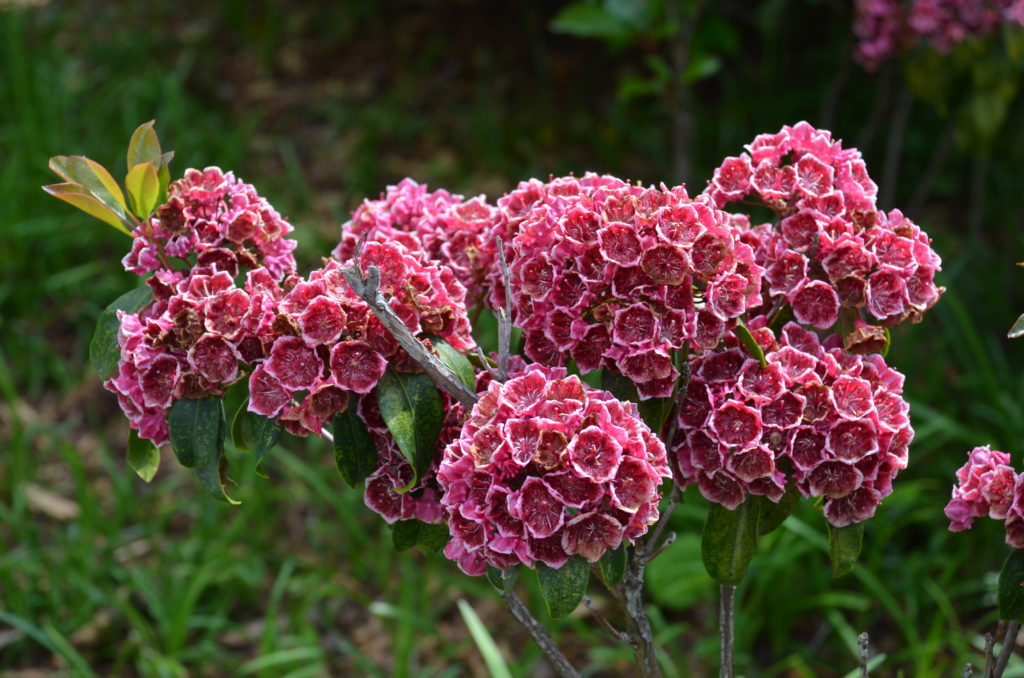In general, the garden soil pH fluctuates only slightly unless you accidentally spilled fertilizer or limestone. Soil pH is also affected by rainfall patterns, decomposing organic matter, and bacterial activity in the ground. In the eastern U.S. rain water is slightly acidic.
Acid rain is the result of these pollutants (mostly sulfate and nitrate) from
power plant smokestacks and automobile exhausts. When acid rain falls upon land, it acidifies the soil, lowering its pH. Soils at high elevations such as mountain peaks are especially prone to acidification, as more rainfall is received compared to soils in valleys or other low areas.
The activity of beneficial microorganisms can also influence plant growth. Natural bacteria aids if decomposing soil organic matter. The accumulation of organic matter may tie up of nutrients, particularly nitrogen. Minor nutrients such as iron, manganese, and molybdenum

Acidic loving plants such as azaleas, rhododendrons, mountain laurels (Kalmia), blueberries (Vaccinium), specific oaks (Quercus spp.), birches (Betula nigra), lenten roses (Helleborus spp.) and many bog plants prefer acidic soils within a pH range between 5.0 – 5.5. The summer foliage of some shade trees such as willow oak, pin oak, and river birch turn chlorotic (yellow) if soil pH rises above 7.0. Leaf chlorosis is often common on urban street trees that are surrounded by concrete sidewalks and building foundations which raises soil pH (acidity declines).
Some species of hydrangeas are also pH sensitive. Flower color of mophead hydrangeas (H. macrophylla) are pH sensitive. Expect blue flowers if soil pH is 6.6 or below; hydrangea blooms turn pink if pH is 6.6 or above. Leaves of oakleaf hydrangeas become chlorotic above a neutral pH (7.0).
Limestone will raise soil pH. It also supplies calcium and magnesium, two key elements important for plant growth. Lime also makes phosphorus more available for the plant growth and increases nitrogen availability. Common liming materials include: (1) ground limestone; (2) dolomitic limestone (dolomite); and (3) hydrated lime. Dolomite is high in magnesium.
Sulfur will lower the soil pH (make the ground more acidic). Most independent garden centers will supply elemental sulfur (called “flowers of sulfur”). Most gardeners spread sulfur and lime in late fall so that winter rain or snowfall will breakdown the products into the soil.
The amount of lime to apply depends on current soil pH, soil type (sand, silt, or clay), and amount of organic matter. Also, what kind of plant(s) are you growing. You are limited on how much to apply the soil per year. Consult your county Extension agent. He or she will likely recommend conducting a soil test; the agent can help interpret the results of the soil test.

 Posted in
Posted in 
